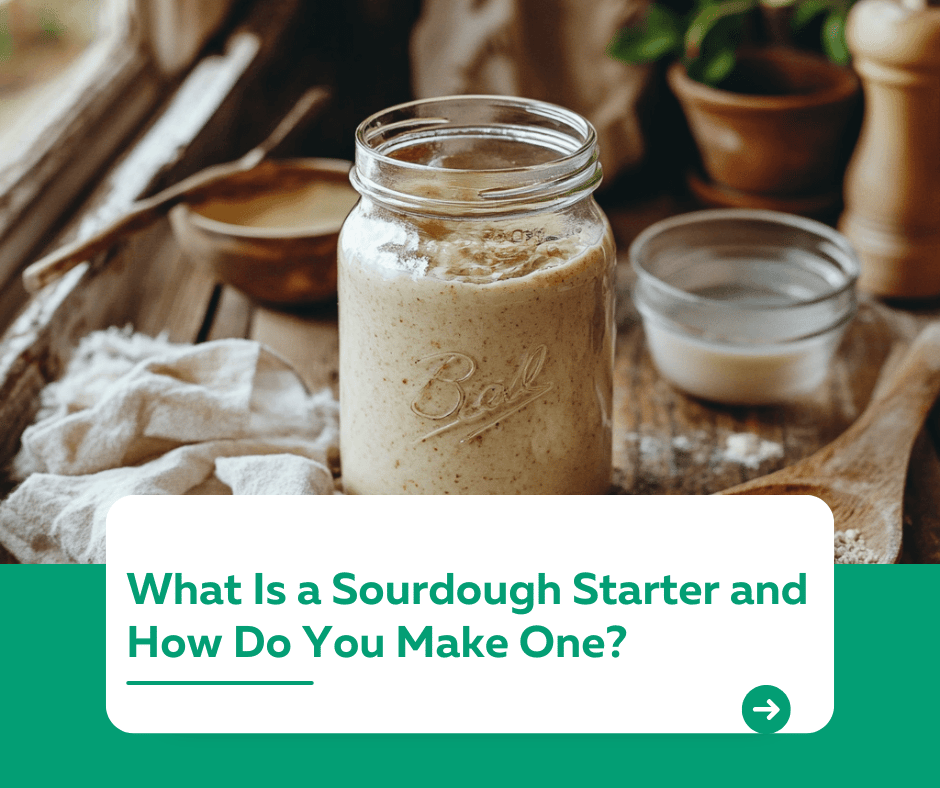
Introduction
“What is a sourdough starter?”
A sourdough starter is the heart of sourdough bread, acting as a natural leavening agent made from just flour and water. It’s a living mixture of wild yeast and bacteria that ferments over time, giving sourdough bread its signature tangy flavor and chewy texture. In this article, we’ll explore what a sourdough starter is, why it’s essential, and how you can make and maintain one at home.
1. What Is a Sourdough Starter?
A sourdough starter is a fermented mixture of flour and water that captures wild yeast and bacteria from the environment.
- Key Features:
- The wild yeast helps the bread rise.
- The bacteria (mainly Lactobacillus) produces lactic acid, which gives sourdough its tangy taste.
- It’s a self-sustaining culture that can last for years with proper care.
Fun Fact: Some bakers use starters that are decades—or even centuries—old, passed down through generations!
2. Why Is a Sourdough Starter Important?
A sourdough starter replaces commercial yeast in bread-making, offering unique benefits:
- Natural Leavening: Wild yeast creates a slower rise, resulting in better texture and flavor.
- Distinctive Flavor: The fermentation process adds a tangy, complex taste to the bread.
- Health Benefits:
- Easier to digest due to the breakdown of gluten during fermentation.
- Contains probiotics and other nutrients from the natural fermentation process.
3. How to Make a Sourdough Starter
Making a sourdough starter is simple but requires patience:
Ingredients:
- 1 cup of all-purpose or whole wheat flour
- 1/2 cup of water
Steps:
1️⃣ Day 1: Mix 1 cup of flour and 1/2 cup of water in a jar. Cover loosely and let it sit at room temperature.
2️⃣ Day 2–5: Discard half of the mixture and add fresh flour and water in the same ratio daily.
3️⃣ Look for bubbles and a tangy smell, indicating fermentation is active.
4️⃣ By Day 5, your starter should double in size after feeding and be ready to use.
Pro Tip: Use filtered or bottled water to avoid chlorine, which can inhibit fermentation.
4. How to Maintain a Sourdough Starter
Once your starter is active, regular feeding is essential to keep it alive:
- Daily Feeding: If kept at room temperature, feed it daily with equal parts flour and water.
- Weekly Feeding: If stored in the fridge, feed it weekly. Let it warm up at room temperature before feeding.
Tip: Always discard half before feeding to prevent overgrowth and maintain balance.
5. Common Issues and How to Fix Them
- No Bubbles:
- Use unbleached flour and ensure the water is chlorine-free.
- Place the jar in a warmer spot to encourage fermentation.
- Foul Smell:
- A sour smell is normal, but if it smells bad, discard and start fresh.
- Mold Growth:
- Discard the starter immediately if mold appears.
Conclusion
A sourdough starter is a living, breathing ingredient that brings life and flavor to your bread. With a little patience and care, you can create and maintain your own starter, unlocking the secrets to baking delicious, tangy sourdough at home.
For more bread-making tips and recipes, visit our Kuestion.com.